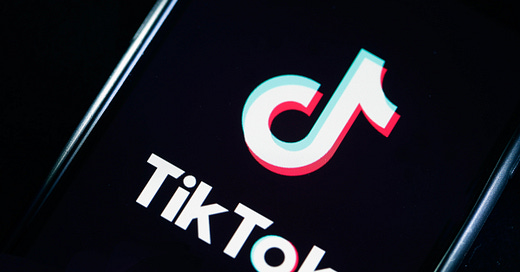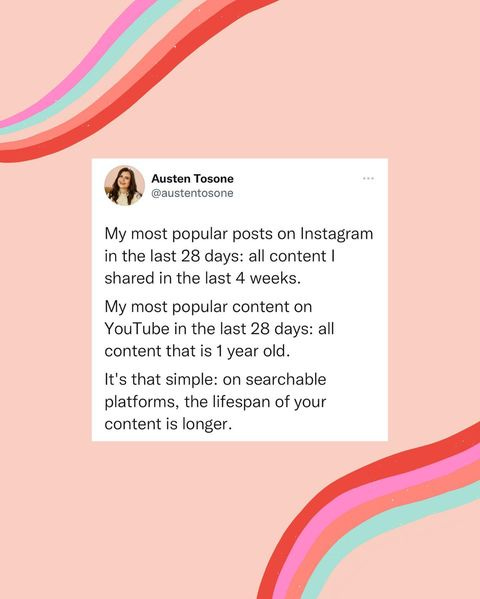

Discover more from Back Row
How Long Does Instagram Have as Fashion's Social Network?
Will self-promoters stick around if they struggle to reach an audience?
Instagram was unique in that after it launched in 2010, it quickly became fashion’s social network. Now, we’re more than a decade into the great Instagram experiment and its dominance, particularly in fashion, is no longer a given. Perhaps Facebook, which bought Instagram in 2012, has ruined it. Perhaps TikTok is more modern and more fun and more interesting — or just more addictive. Perhaps Instagram is just nearing the end of its natural life, the way Facebook and MySpace and Friendster have all faded in cultural relevance or altogether disappeared. Or perhaps Instagram has just made it so challenging for self-promoters to surface in people’s feeds that it feels increasingly pointless to try.
Self-promotion is necessary in any industry, particularly in fashion and publishing. Social media followers can lead to a lot of valuable things — sponsorships, book deals, well-paying jobs, speaking engagements, television shows — and create career opportunity for talented people, particularly those the media industry can no longer afford to employ.
Frustration with Instagram is mounting, and not just because of Facebook whistleblower Frances Haugen’s documents that suggested the platform was particularly damaging to young girls (though that research was later questioned, it was the catalyst for a significant and ongoing conversation about the platform’s consequences for this demographic). There are also the Reddit threads about reach and engagement plummeting. And the offline chats amongst influencers and media types about how “no one really knows what’s going on with Instagram” and “it’s weird for everybody!” All of this spells trouble for the once-great platform that turned print fashion magazines into relics.
Influencer expert Brittany Hennessy, author of Influencer: Building Your Personal Brand in the Age of Social Media, said the pandemic was also a turning point for our online lives. “The thing that made influencers different is they were shooting in exotic locations, and during the lockdowns when everyone had to be home, influencers were just like us. And unless they have a beautiful house or apartment, they were shooting in their bedroom like everyone else,” she said. “TikTok is not me swimming with pigs in the Bahamas — it’s standing in front of a half-clean closet.”
The fashion industry and Instagram were natural bedfellows. Instagram traded in the thing the fashion world has always understood: images. There was immediate pressure to have an “aesthetic” on Instagram, like users were starring a never-ending ad campaign. It was a better, prettier place for luxury brands worried about their “positioning” than Twitter or Facebook, which was less curated and lacked the same capacity for gorgeousness.
But as the app developed, Facebook forgot the other reason that people, particularly fashion ones, loved being on there: they got attention. And this, I think, is as core to the reason Facebook is losing clout with users as any toxicity at the company. If you aren’t letting users bask in likes and followers, why would they stick around? They won’t. They will go to TikTok, where they can more easily make a jazzy video that feels more modern than a static image or a slideshow of static images and where that video will potentially been seen by and engage many, many more people. The New York Times recently noted that one billion people use TikTok each month, calling it “2021’s central vehicle for youth culture and online culture generally.” (Instagram still has more users, at 1.3 billion, but in a recent survey, teens ranked it their third favorite social network, behind TikTok and Snapchat.)
This trouble for Instagram probably began in 2016, when it traded the reverse chronological feed for an algorithmic one, which mysteriously promoted some things over others. Instagram was vague about why it made this decision, saying only that posts would be “ordered to show the moments we believe you will care about the most.” Not only was this a change to something users really liked (and still miss, all these years later) but one that also made it harder to promote whatever it was that you were on Instagram to promote, even if that was simply your fashionable self. The message was that great content would be surfaced, but only Instagram knew what it deemed worthy of exposure. Instagram may understand that this change has deeply damaged its relationship with its devoted users, which would explain why CEO Adam Mosseri just went before Congress and said, “We believe in more transparency and accountability and we believe in more control. That’s why we’re currently working on a version of a chronological feed that we hope to launch next year.” He declined to provide a date of launch just adding they’re “targeting the first quarter of next year.” (There’s also reason to believe this won’t ever launch given that hiding likes was teased and tested and then never rolled out as a platform-wide default.)
Fashion is a self-promotional industry. After all, why else would fashion people bother going to launch parties for things like home wear? Because they want to wear fashionable clothes and be photographed in those clothes. Instagram gave us the opportunity to do that whether you were at the party or not (bonus points if you were). It had the effect of amplifying an ecosystem that fashion people liked and understood, while ushering a cadre of influencers into the business. (Another thing fashion people love: a new crop of beautiful people to dress.)
For a long time, people figured they would just get on with this algorithmic world. Things they could do to surface in the feed included things like getting likes and comments. Then it was posting stories. Then slideshows. Then reels. Influencers have told me recently that now you have to create slideshows and reels and post to your feed around twice a day and go live. Don’t worry about making it perfect, Instagram now tells creators. Aesthetics are dead. Just post a lot!
The problem is a lot of people do that stuff and don’t see a satisfying increase in engagement. They are working harder than they ever have at this, and coming away feeling like their efforts are futile. That’s because most of this work benefits no one but Facebook, which sells your time on the platform to its advertisers and therefore wants you captive there as much as possible, essentially working for them. But, with Facebook’s evils being one of today’s dominant media narratives, why would anyone want to do a bunch of what often feels like free work — for them?
Until recently, people who liked Instagram but felt frustrated by all this had nowhere else to go. Now, we have TikTok, to which fashion influencers and fashion people are quickly migrating because they have realized they can find a much bigger and more engaged audience there than on Instagram. In fact, I’d guess that a lot of people went to TikTok because they can plug their Instagram profiles there and drive up engagement Instagram has systematically taken from them.
Fashion brands are also now well-positioned to embrace TikTok as the industry’s dominant social platform. As Hennessy said, “TikTok is entertainment, not perfection,” which is a shift that fashion itself has been embracing. Labels like Gucci and Balenciaga have been trading in a certain kind of acceptance over the past several years, with their street casting and normcore design tropes, making an unfettered ecosystem of video snippets of normal people feel perfectly OK. Yet a decade ago, this would have likely horrified the world’s top fashion houses.
Plus, TikTok now offers shopping features, and shopping is a better experience on video. Don’t you love sites that have video snippets of models moving in their clothes? It gives you a much better idea of what you’re buying than a static image, and the more I spend on something the more reluctant I am to purchase it without that video.
Of course, Facebook is plagued with a litany of issues more serious than “it won’t let me self-promote,” like its spreading of misinformation on things like the COVID vaccine. TikTok obviously has its own serious moral failings, like also promoting harmful content to teens. But none of that has changed the enormity of the cultural impact of these platforms, or the fact that social media, in this lifetime, is probably here to stay.
With any social media platform, there’s also the massive issue of how we use it to compare ourselves to others, and then come away feeling worse about ourselves. I grew up reading magazines that made me feel worse about myself and was willing to make that tradeoff because they gave me something else I wanted – access to a certain world and information I couldn’t get any other way. Of course, this was pre-smartphones, and magazines are no longer necessary for that. But we may find soon that Instagram isn’t either.
One thing that defines fashion is recognizing the end of a trend and deciding when it’s time to move on.
Please subscribe to get more posts like this sent straight to your inbox and support independent fashion journalism.





